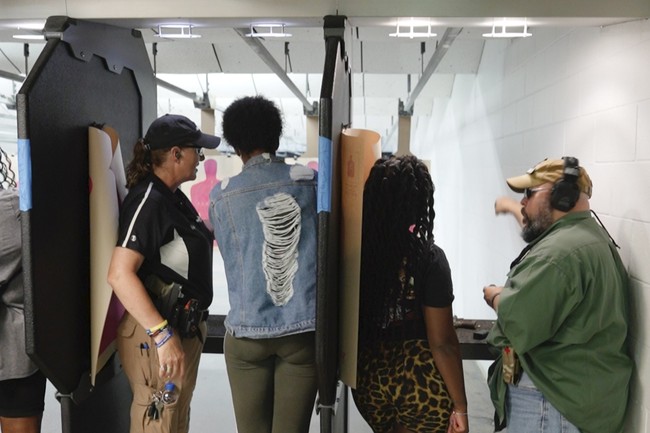A lot of times, the people who write about guns don’t actually know what they’re talking about. At best, they can spout a plethora of statistics to try and make themselves look like experts, but then you ask them what a heat shield is and they say something akin to it being the shoulder thingy that goes up.
And the bigger the publication, the worse it seems to be.
But the New York Times apparently has a reporter covering gun culture who says he actually knows a thing or two about firearms.
When I was nine, my dad took me down to my grandfather’s basement. In one corner, the elder Gibbons-Neff had his desk, along with a painting of the submarine-hunting warship he had crewed in World War II and a locked cabinet full of guns.
Inside were some shotguns and my dad’s .22-caliber bolt-action rifle. The scarred wooden gun had been given to him in the early 1950s, when he was around my age.
After some pleading and safety training with the rifle, my dad let me shoot it at a paper target outside. I don’t know when he said it, but I remember it distinctly: It was the first time he had fired a rifle since 1966, when he served in the Vietnam War.
So began my complicated relationship with firearms.
When I was a boy growing up in suburban Connecticut, target shooting at my grandfather’s farm in Maryland felt a little rebellious. At one point, I thought it would be cool to sew an N.R.A. patch onto my sweatshirt, but like most teenage boys I didn’t know how to sew, or care to learn.
Citing a “complicated relationship with firearms” isn’t really promising, in my book, though it might have been necessary because he does work for the Times.
The writer, Thomas Gibbons-Neff, was a Marine infantryman in Afghanistan, though, so it’s possible the complications are the horrors of war, which would be fair. People how have seen combat deal with it in their own ways, and I’m not going to judge how someone processes that. If it means backing away from guns, so be it.
Then again, he said he bought an AR-15 after he left the military, so I’m doubtful that’s the case.
Then we get to this:
It’s almost intellectually impossible to write about the appeal and popularity of firearms here at home without also discussing the firearms-related crime and violence unique to this country. I thought, maybe naïvely, that I would be the right person to parse the scope of it all: I knew enough about the general culture, and could try to help explain a part of the United States where The Times doesn’t really have a cultural foothold. But much has changed since I first picked up my father’s .22.
Gun violence and mass shootings are now distressingly common, and law-abiding gun owners must live under that weight, just as the rest of the country does. They, too, are asked to reckon with these crimes. This tense climate has eclipsed coverage in the national media of the popularity of shooting, hunting, tactical firearms training and competitions, and the massive consumer and entertainment market that has grown alongside this important part of American identity.
I hope to change that, in part, by serving as a bridge between those who look skeptically at The Times’s coverage of gun ownership, and those who have never handled a firearm.
If that’s really what this is about, then great, but I’m skeptical.
Especially as he says we’re “asked to reckon with these crimes” and how we must “live under that weight” regarding violence.
The thing is, I don’t have to reckon with anything. I didn’t do it and my guns weren’t responsible. That’s a fundamental position of the gun culture he says he wants to bridge the gap to. We’re not going to give up our rights because doing so won’t solve the issues.
If he can’t understand that, then why should we trust that he’ll report on any of the other stuff in a manner that remotely understands this?
Still, if the New York Times is, in fact, looking to approach the gun culture in a serious manner, going beyond the idea that we’re all just a bunch of extremists looking to overthrow the government or whatever, that’s a good thing. We’ve been seeing a lot of entities with politics that include an anti-gun rights bias suddenly start looking at how to be a bit more neutral.
If the author, Thomas Gibbons-Neff can do that, so much the better.
But in writing, there’s a concept called “show, don’t tell.”
Don’t tell me you’re trying to bridge the divide. Show me.
Until then, all I see is talk.
Read the full article here





![J.D. Vance Honors Pope Francis in Touching Tribute Following His Easter Monday Passing [WATCH] J.D. Vance Honors Pope Francis in Touching Tribute Following His Easter Monday Passing [WATCH]](https://www.rvmnews.com/wp-content/uploads/2024/08/2024.08.25-06.48-rvmnews-66cb7c9906dba.jpg)



